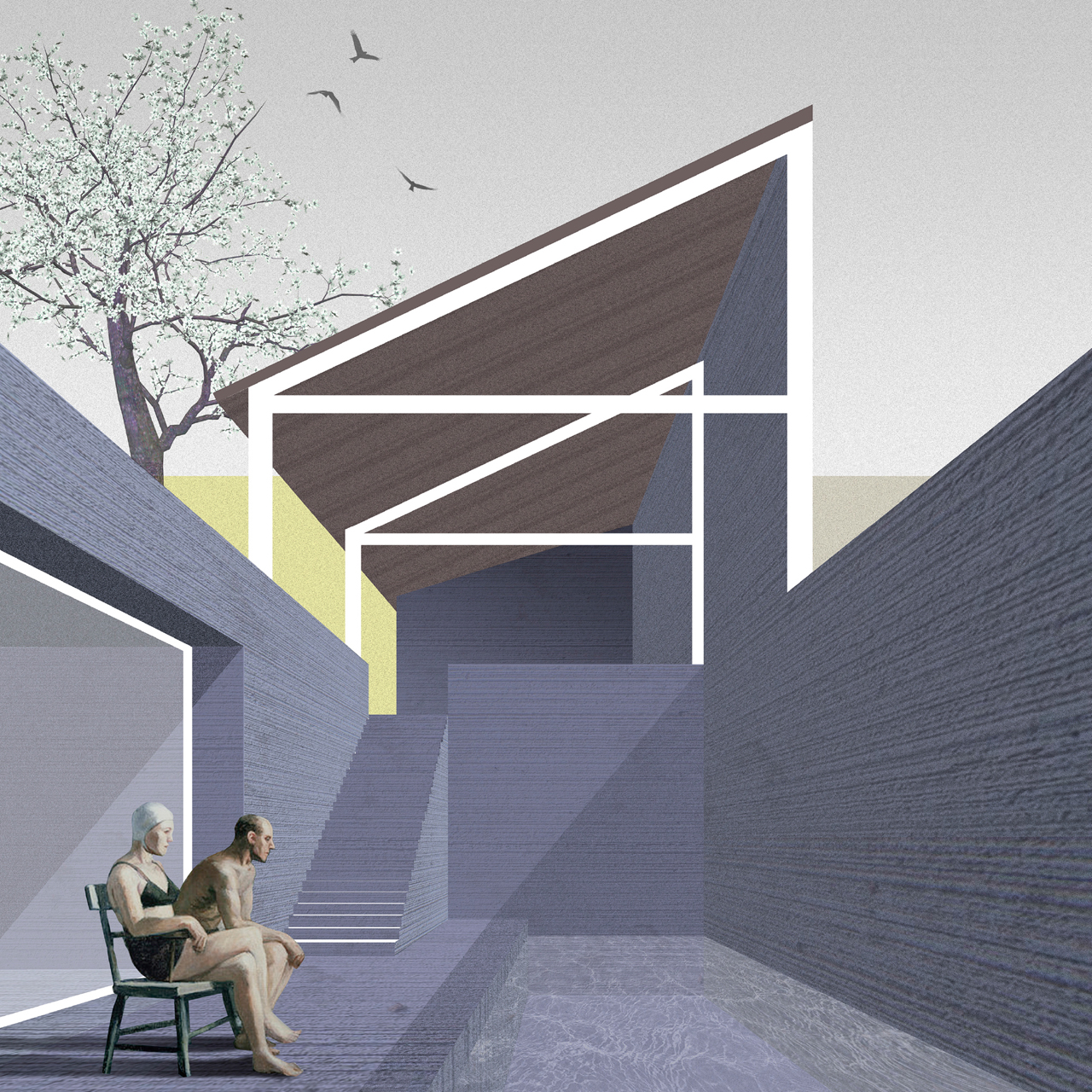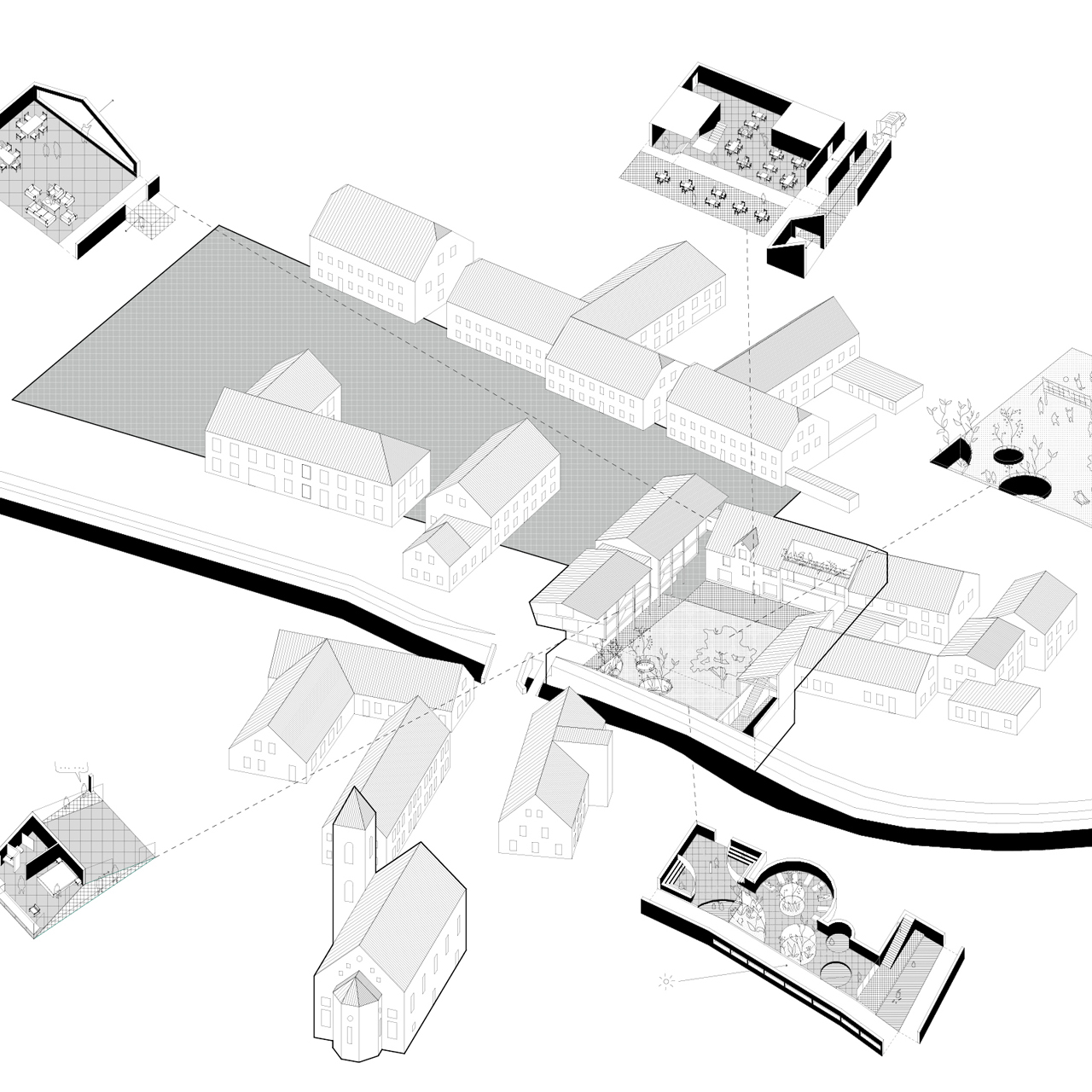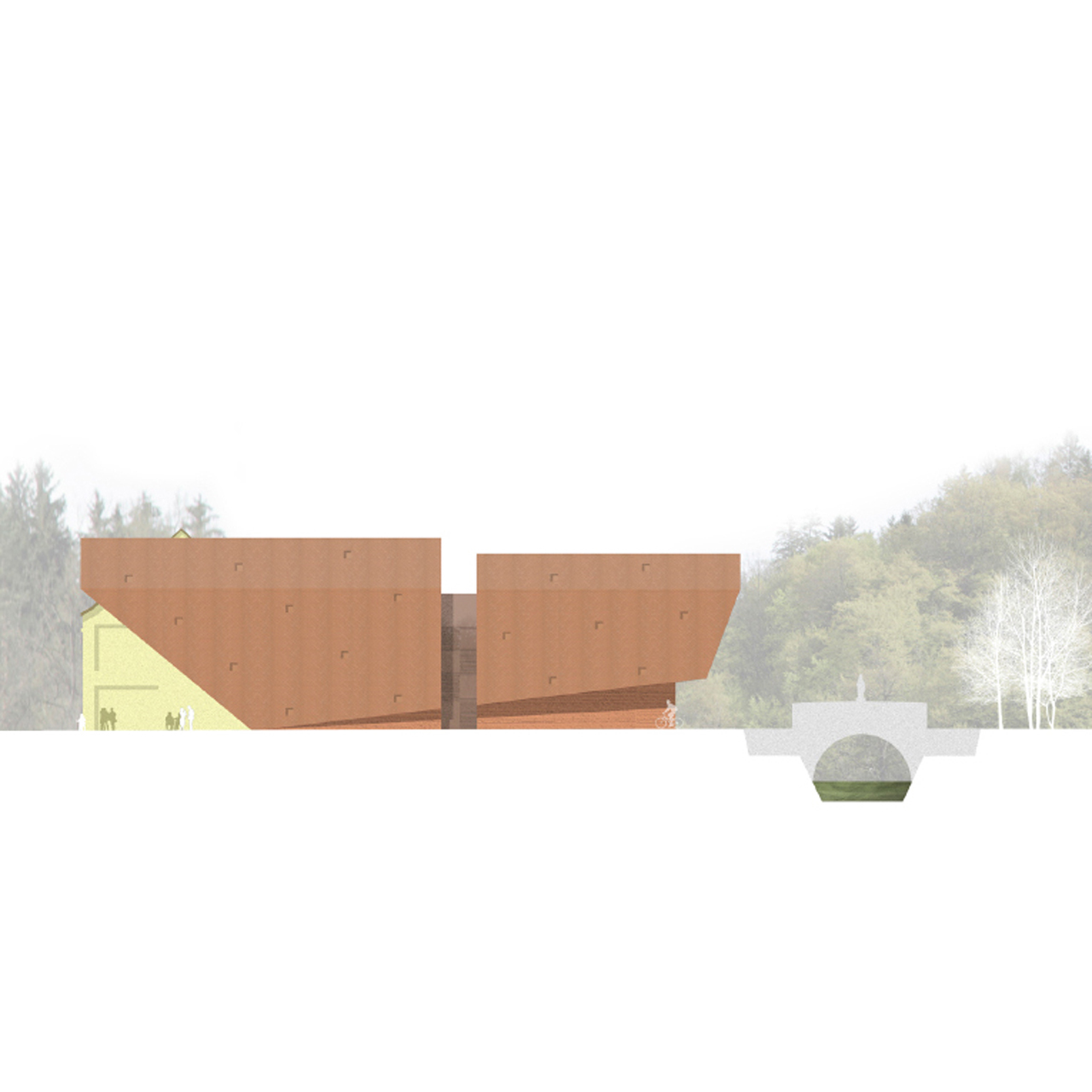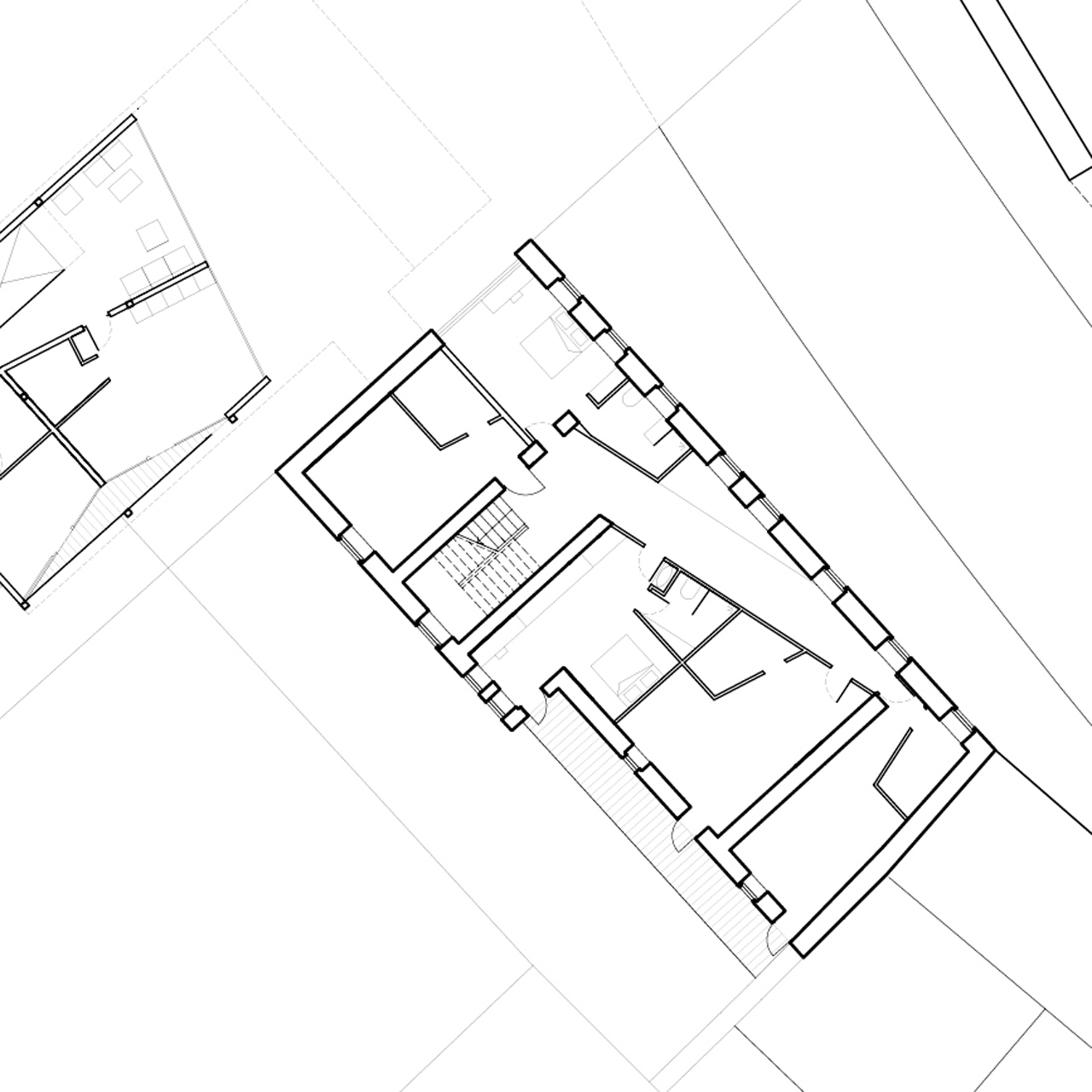Master Sommersemester 2016
Guislain Baudalet
Projektübung (Studio 2)
Uli Tischler
Typology:
Recreation
“Heterotopias are places absolutely other. They are located utopias, real places out of all others.”1
“If an anthropological place can be defined as relational, historical, and concerned with identity, then a space which cannot be defined as relational, historical, or concerned with identity, will be a non-place.”2
Magdas am Land combines both housing for refugees and hotel rooms for visitors. Two places absolutely other. Two places of transit. The project should be a heterotopia but avoid being a non-place. Magdas am Land should be an „anthropological heterotopia“.
To be anthropological2 the designed place should be first historical which is achieved by working with two existing buildings. It should also be relational and concerned with identity. The functions encircle a large common garden, which is a flexible support for activities. The choice of not separating refugees and visitors but to design private rooms and common rooms aims at not differentiating the occupants of Magdas am Land. Who are the hosts? Who are the guests? Who am I?
To be a Heterotopia1, the designed place should first juxtapose in one space different smaller spaces. Magdas am Land should thus offer a diversity of places for the diversity of people who live in it. A diversity of places through diverse functions (restaurant, wellness, bar, garden, plaza, reading and hotel rooms), diverse atmospheres and room typologies. A way to accommodate single travellers, couples or families and to adapt to the duration of their stay.
It should also “have a particular opening and closing system which isolates it from other places while still being linked to them”. The project includes the renewal of Arnfels Hauptplatz to integrate Magdas am Land in it with a sheltered urban plaza. The functions of the ground floor, such as the restaurant and the bar are public as well as the underground wellness center and can thus also benefit the inhabitants of Arnfels.
Through the plaza and the public functions, the project is open to Arnfels. But it is also closed in a way. Through a slit one can access the inner garden which is linked to the more rural atmosphere of the south. It is enclosed on three side and open to the river. The seventeen rooms are on the two upper floors and overlook the more peaceful and enclosed part of the project.
This is how the project is not closed nor open, not refugee camp nor hotel, not one but many. This is how it transforms a place of transit in a place of sharing. This is how Magdas am Land tries to be an „anthropological heterotopia“.
1 cf. Michel Foucault, 1967
2 cf. Marc Augé, 1995




